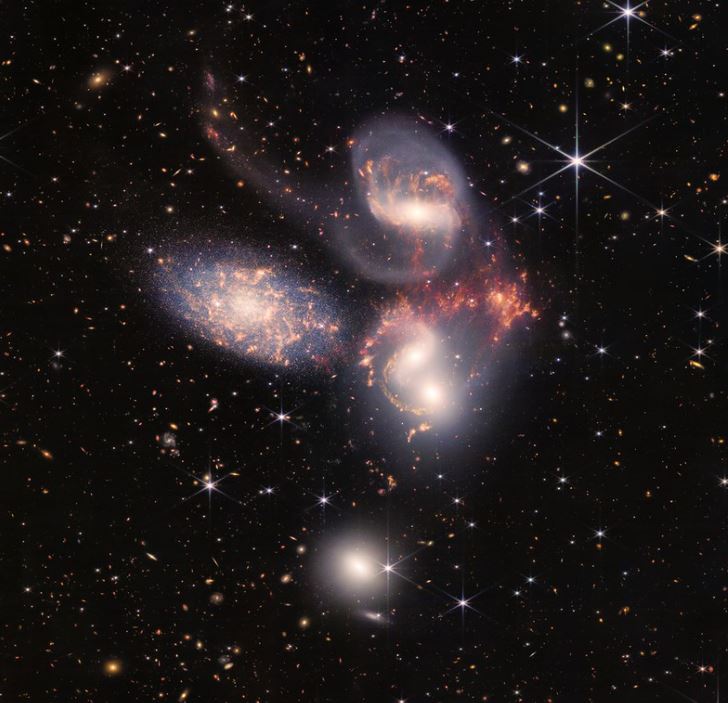
Scientists are getting a better look at the universe thanks to the new James Webb Space Telescope (JWST)—the largest, most powerful space telescope ever built.
The JWST is a joint project of NASA, the European Space Agency and the Canadian Space Agency. It was sent into space on a rocket on Dec. 25, 2021 and is now located about 1.6 million kilometres away from Earth. It orbits the sun, keeping in line with Earth.
NASA released the first images taken by the telescope in July 2022. One of these images shows the most distant view of the universe ever seen. Other images from the JWST include Jupiter and Mars, as well as two exoplanets (planets not in our own solar system). The telescope has also captured images of the Southern Ring Nebula, a cloud of gas surrounding a dying star, as well as the Carina Nebula, where newly forming stars can be seen.
The JWST observes only “infrared” light. The further away something is in the universe, the longer it takes for its light to reach us on Earth. As light travels through space, it stretches out into longer and longer wavelengths. As it gets longer, it becomes invisible to humans, and is called infrared light.
Because the JWST sees infrared light, it is able to see further away—and further back in time—than other telescopes. It also records more details of the objects it observes. Scientists hope this will help them learn more about the origins of the universe, and better understand things like black holes, or how planets and galaxies are formed.
The images the telescope sends back to Earth do not look like the photographs we see from NASA. Because the JWST records only infrared light, the images it sends back appear black to a human eye. However, they actually contain many different shades of grey that represent different wavelengths of infrared light.
Scientists working with the images use filters to separate the different wavelengths. Then they give each wavelength a different colour so it can be seen by a human eye. When all of these filtered layers of colour are combined, they create the colourful pictures that NASA sends out.
Adding colour to the images not only makes them more interesting for people to look at. It also helps scientists see more details in the images, which will help them better understand what they are looking at.
THINK & DISCUSS
What does the article say about colourful images of space, like the one here? Do you think a black-and white-image with this article would have been better? Why or why not?
What does the author mean about seeing “further back in time”?
Do some digging to find out more about the James Webb Space Telescope. What makes it so powerful? Who is James Webb?
LINKS
First images from the James Webb Space Telescope https://www.youtube.com/watch?v=1C_zuHf6lP4&t=121s
The universe through time: https://webbtelescope.org/webb-science/early-universe
The Wikipedia page for the JWST includes some really interesting facts and images: https://en.wikipedia.org/wiki/James_Webb_Space_Telescope.







